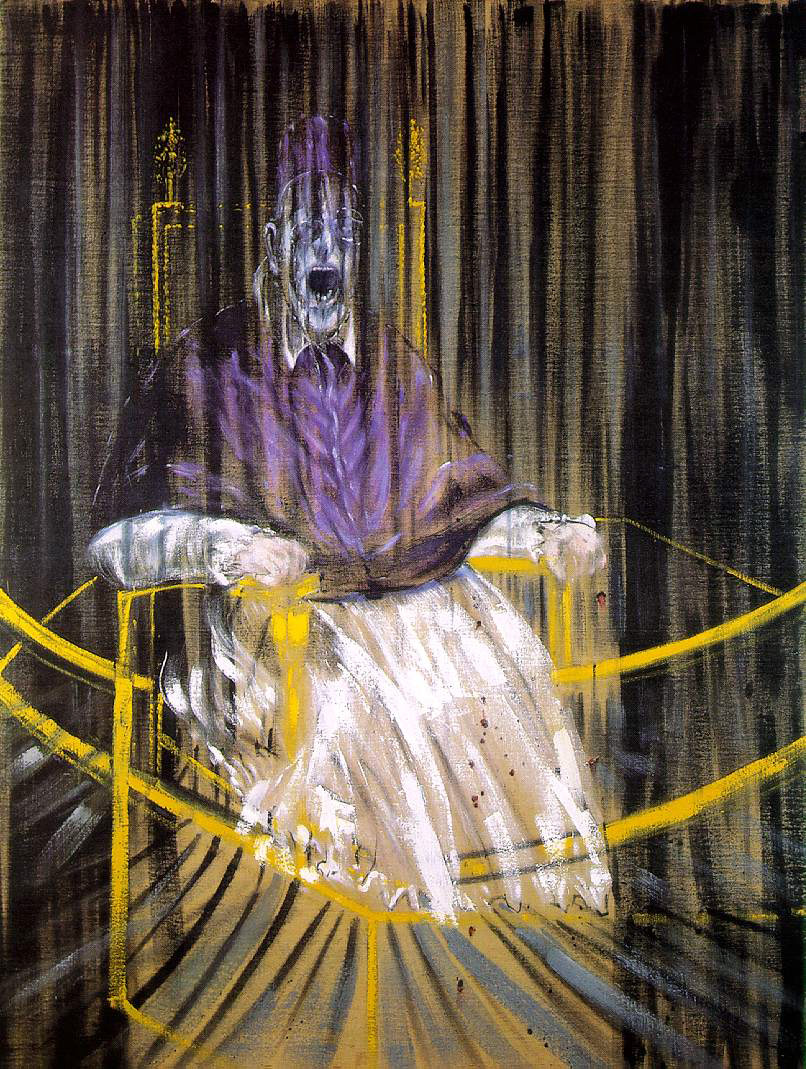 Haunted Rome
Haunted Rome
I recently received an email from a reader who asked if I had ever taken a ghost haunting tour in Rome. The only ghost tour we’ve ever been on was the “Jack the Ripper Tour” in London led by Donald Rumbelow, a crime historian and one of the leading “Ripper” authorities. He is still taking the walk.
In many of the walking tours in Rome, the docent was always eager to tell a few ghost stories. They’re always entertaining. Whether you believe in ghosts or not, there is a lot of unexplained phenomenon going on out there. Having the opportunity to run into a genuine Roman ghost could be an experience that will stay with you for a long time. If any of you do happen upon a good Ghost Tour, please write to me and tell me.
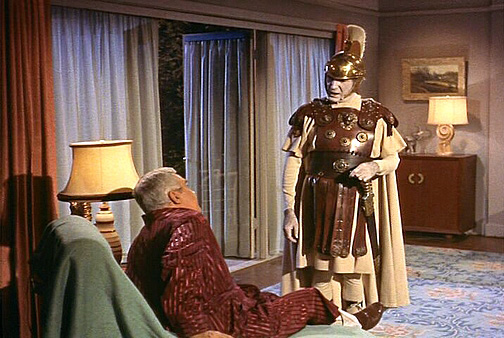 As a kid I was a big fan of the Superman TV show of the 1950’s. I loved when Perry White, Clark Kent’s editor at the Daily Planet newspaper, would yell “Great Caesar’s Ghost” when he got frustrated or angry, which was pretty much most of the time.
As a kid I was a big fan of the Superman TV show of the 1950’s. I loved when Perry White, Clark Kent’s editor at the Daily Planet newspaper, would yell “Great Caesar’s Ghost” when he got frustrated or angry, which was pretty much most of the time.
If anyone had a right to haunt Rome it would definitely Julius Caesar. First the Senate rewarded him with the title of dictator and then they killed him because they’re afraid he might become a dictator. If I was the ghost of Caesar, I’d haunt the hell out of the city. The closest I ever came to a Caesar ghost legend was after his death a comet crossed the sky over the Forum. Many thought it was Caesar’s spirit leaving this world. Maybe it was. I’ve read a few accounts of people who swore they saw the ghost of Julius Caesar in the Coliseum, dressed in a golden toga. I’m not doubting they could have seen a ghost, but I am questioning whether or not it was the ghost of Julius Caesar.
Caesar was assassinated in 44BC. The Coliseum was built in 69AD, more than 100 years after his death. He had no connection to the amphitheater. If he were to haunt any place in the city it might be in the Suburra (now the Monti) where he lived as a young man, or the Roman Forum or Pompey’s Theatre (now Largo Argentina and Campo dei Fiori) where he died.
Roman Ghost stories go way back to antiquity. Ever since mankind created an afterlife, the question of ghosts and supernatural was always of interest. There must have been hundreds of ghost stories but unfortunately none of them were written down. None except for one.
Possibly the first ghost story ever written was by Pliny the Younger (61-115AD), the Roman lawyer, magistrate and author. It’s a haunted house story that takes place in ancient Athens.
In the tale, the Greek philosopher Athenodorus buys a haunted house at a bargain price. One night Athenodorus is writing at his table when the ghost appears, rattling his chains and waving his boney fingers at the old philosopher to follow him. Athenodorus holds up his hand to tell the ghost to wait. He is in the middle of a thought and can’t be disturbed. Of course, this really pisses off the ghost who in turn rattled his chains even louder until Athenodorus finally gets up and follows the ghost into the courtyard where it disappears.
The next day, Athenodorus goes back to the courtyard and digs up the spot where the ghost vanished. Sure enough, he discovers a skeleton in chains. He calls on the local authorities, they move the skeletal remains to a proper graveyard and the haunting ends. OK, it’s not Poe or H.P. Lovecraft but it was written over 1900 years ago.
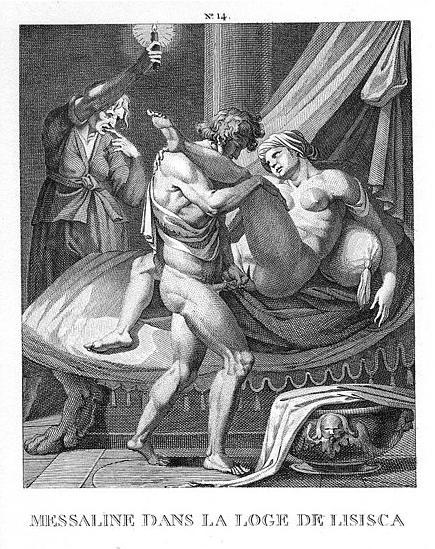 The Ghost of the Sex Goddess Valeria Messalina
The Ghost of the Sex Goddess Valeria Messalina
Valeria Messalina (early 1st Century AD) was the third wife of the Emperor Claudius. She was 18 when she married him and 28 when he ordered her death, either for plotting to overthrow him or for publicly marrying her lover Gaius Silius in Ostia. Silius was executed at the same time.
In her life, Messalina was a ruthless, sexually insatiable predator. In one anecdote (from Tacitus) she held a competition with one of Rome’s most famous prostitute’s as to who could have the most sexual partners in a night.
She’s still regarded as one of the most notoriously promiscuous women of ancient Rome. In death she has been known to pinch the butts of handsome young men in Piazza Navona.
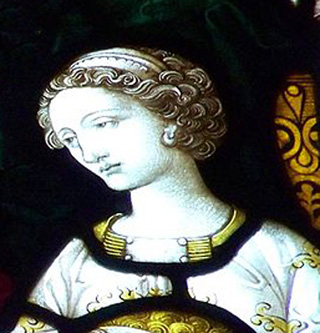 The ghost of the Jewish Ghetto
The ghost of the Jewish Ghetto
Julia Berenice (early 1st Century AD) was the daughter of King Herod Agrippa I, the grandmother of Salome and mistress of Emperor Titus. She was the wife of her uncle, the lover of her brother, and eventually she found her way into the heart (and toga) of the Emperor Titus around 65AD. When Titus became Emperor she was pretty much run out of Rome by popular demand. Her reputation was too outrageous even for the scandalous behavior of the Imperial Romans.
Julia left Rome and in her life she never returned. In her death however, she haunts the Porta Ottavia the Jewish Ghetto.
The Guided Tour group ‘Associazione Culturale Genti e Paesi’ has created interactive ghost tours throughout Rome. The docent will lead you to the location, tell you the story and you’ll get to meet the ghost (an actor portraying the legendary phantom). In 2010, they created a performance piece involving the Ghost of Julia Berenice at the Teatro Marcello. I have no idea if the actual Berenice ghost made an appearance but the performance ran for a couple of months.
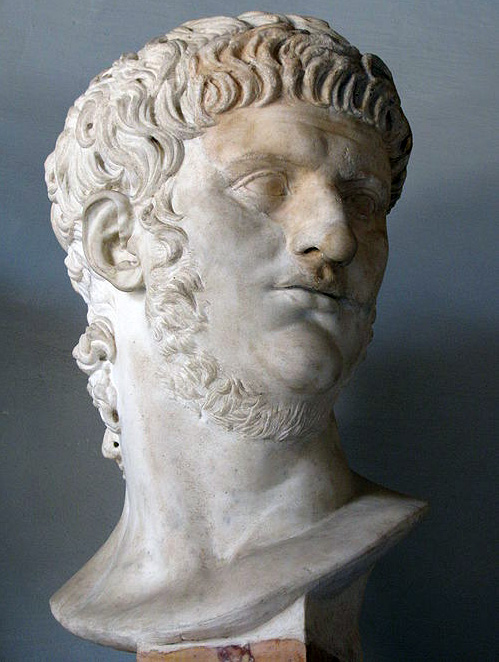 Emperor Nero Claudius Caesar Augustus Germanicus Phantasma
Emperor Nero Claudius Caesar Augustus Germanicus Phantasma
Of the some 53 Emperors of the Western Empire before Constantine I, the only known Imperial Ghost haunting Rome is the Emperor Nero. Even in death he can still create a scandal.
Nero was buried in the family tomb on the Pincian Hill (now the Borghese Gardens) near a grove of Poplar trees (near the Piazza del Popolo). Adjacent to what is now the Porta del Popolo, there was once a nut tree filled with black crows where Nero’s ghost would feast alongside demons and witches.
In 1099, after many complaints of frightened Romans, Pope Pasquale II ordered the tree to be burnt down and a chapel built in it’s place. Nero’s tomb was dug up and thrown into the Tiber River.
Pope Sixtus IV enlarged the church in 1475 to become the beautiful Chiesa di Santa Maria di Popolo.
Supposedly the Nero hauntings stopped when the chapel was built in 1099, but hauntings are still reported.
Nero was no stranger to ghosts during his life. After he killed his mother, Agrippina, he was haunted and tormented by her ghost for the rest of his life. He tried drowning her in a collapsible boat, but she swam away. He had her bedroom ceiling rigging to collapse on top of her but it failed to kill her. Finally he had one of his guards kill her with a sword.
Using Magicians and Necromancers, he tried to conjure up her spirit and beg her to leave him alone but she haunted him until his death, maybe even after his death.
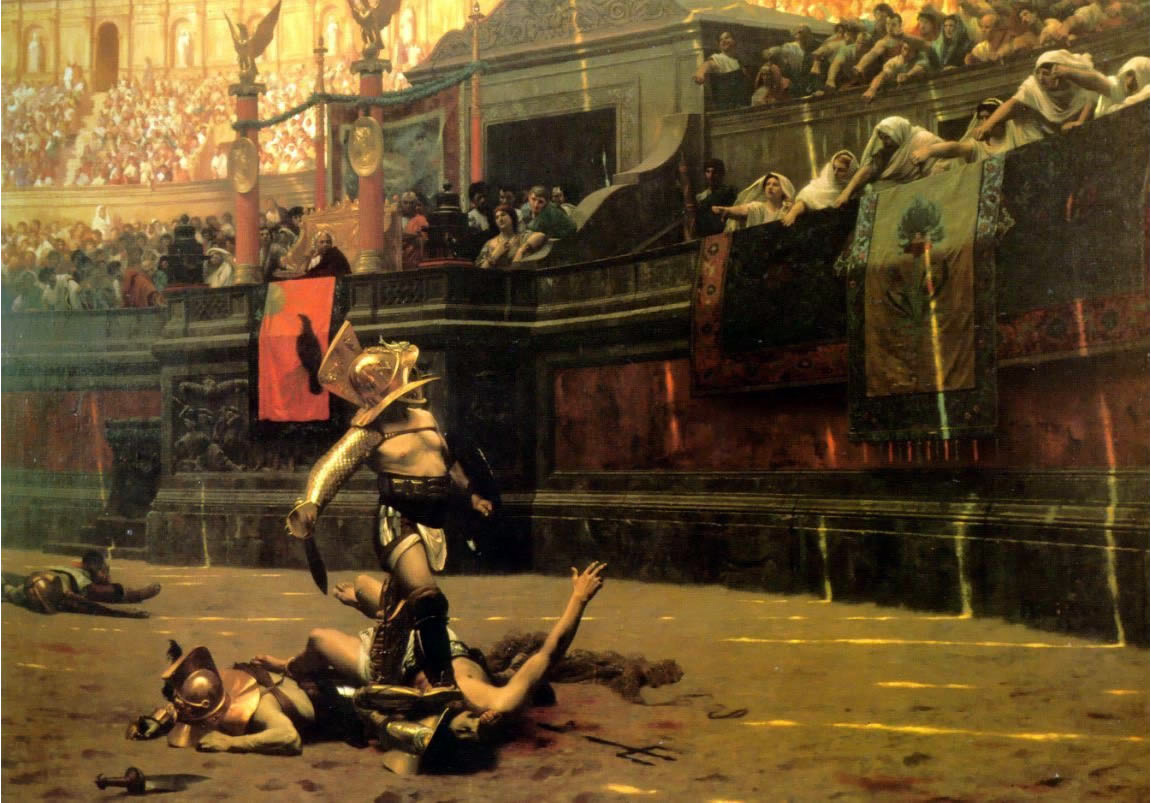
Phantoms of the Coliseum
There are reports of paranormal hauntings all the time in the Coliseum. People have reported cold spots or ghostly whispers or phantom hands pushing them when there was no-one near. People working in the Coliseum have said they heard noises and screams both human and animal. Some have even seen figures in the seating area. Yes, in the right atmosphere and setting, you could be convinced of many paranormal activities, and then, if you open you mind to the thought of thousands of specters residing in the Coliseum, you can actually feel them when you’re inside.
It is always a few degrees colder inside the Coliseum. Some say it’s all the stone. Other will tell you it’s all the ghosts. I’ll leave it to you to decide.
The painting of the Coliseum entitled “Pollice Verso” (thumbs down) is by the 19th century French painter Jean Leon Gerome. It is on display at the Phoenix Art Museum
GHOSTS OF CHRISTIAN ROME
The spirit world of Christian Rome has much better documentation. The afterlife haunting the present life is a common theme in Christian life. Fear of eternal damnation is one of the principals of the religion and many people are preoccupied to obtain insights into the tormented world of the damned or the blessed afterlife.
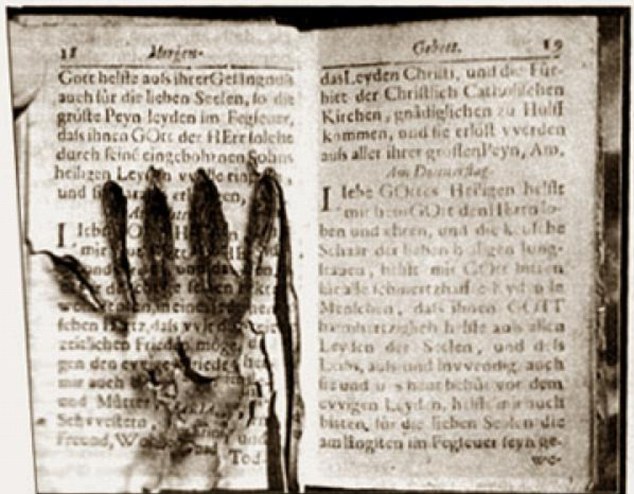 Rome even has a museum dedicated to the Holy souls in Purgatory (Il Piccolo Museo del Purgatorio). The museum (actually one wall) is in a small room off the Chiesa del Sacro Cuore del Suffragio on 12 Lungotevere Prati, between to the Ponte (Bridge)Umberto I and the Ponte (Bridge) Cavour.
Rome even has a museum dedicated to the Holy souls in Purgatory (Il Piccolo Museo del Purgatorio). The museum (actually one wall) is in a small room off the Chiesa del Sacro Cuore del Suffragio on 12 Lungotevere Prati, between to the Ponte (Bridge)Umberto I and the Ponte (Bridge) Cavour.
The museum shows proof of souls trapped in Purgatory, kind of the waiting room before one enters heaven or hell. The only way out of Purgatory is to atone for your sins and no one knows how long that can take. The exhibits includes scorched handprints on a bible, a table with ghostly handprints, fingerprints of tortured souls and photos of the damned.
Victor Jouet, a French Missionary, was the inspiration for this strange place after a fire destroyed part of the Chiesa del Sacro Cuore in 1894. When he saw a tortured face in the ashes he was certain he had found a doorway to Purgatory. The power (and fear) of ghosts was so powerful that even Pope Pius X gave permission to develop the museum.
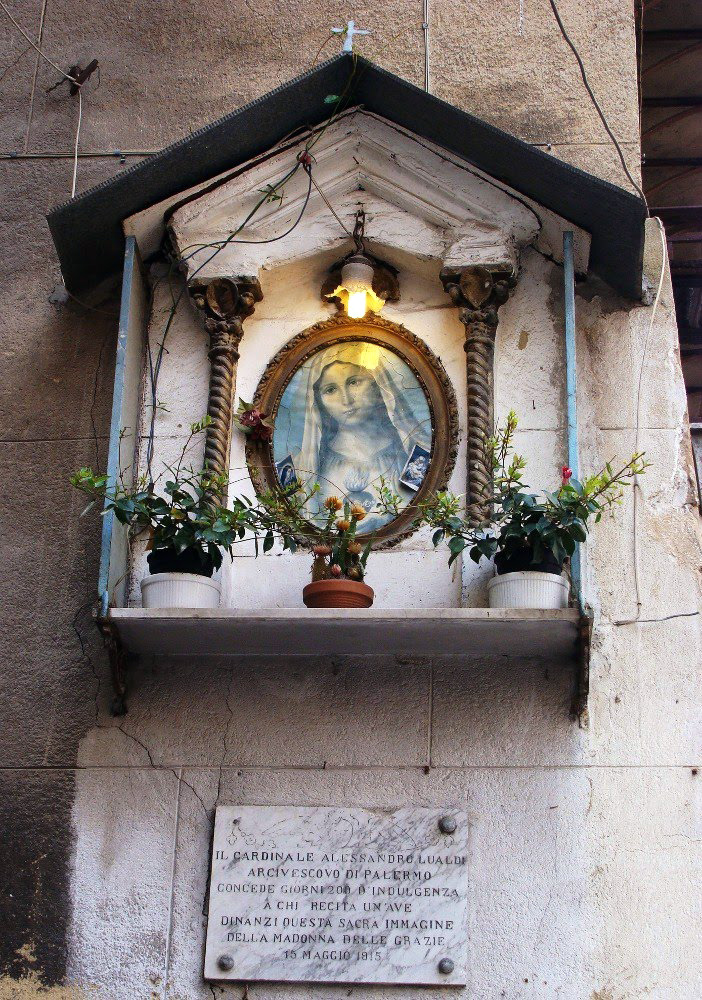 The Madonnelle (little Madonna Shrines)
The Madonnelle (little Madonna Shrines)
As you walk along the small cobblestone streets of the old historic city you’ll see a lot Madonnelle (small Madonna) shrines affixed to the corners of the buildings. These days they serve as votive offerings to (mostly) the Virgin Mary. The original concept stems from the ancient Roman shrines to the ‘Lares Compitales’, the deities of the crossroads who watched over you as you wandered through the city. These days, the Madonnelle ward off evil spirits and protect the people of the neighborhood.
In the days before streetlamps, the Madonnelle had a dual purpose to provide heavenly protection and provide some light to the dark streets for safe passage to travelers. Dark streets proved to be very dangerous.
There once were thousand of them, it’s estimated that now less than 500 remain, dating from the 17th to 19th centuries. Many of them are covered by a metal roof, and have a small lantern, or a stand for a candle, and a shelf to place flowers. Some are simple, others are splendidly baroque, but don’t let their architectural beauty fool you, they can get very vindictive when mistreated or shown gross disrespect.
A bocce player in the 16th/17th century was so enraged when he lost his match, he hurled the ball against the wall of a nearby building on Vicolo delle Palle (off via Giulia) and it landed beneath the right eye of the Holy Madonna in the Madonnelle. The moment the ball struck the Madonnelle, the man’s arm was paralyzed. It started to move again 40 days later after he repented for his sin.
Olimpia Maidalchini Pamphilj was the sister-in-law of Pope Innocent X (Giovanni Battista Pamphilj), a Pope more interested in building a legacy of public works and lining his pockets with treasure than he was in caring for the people of the city. The introduction photo for this piece is the Francis Bacon painting of Pope Innocent X based on the famous Velasquez painting in the Museum Doria Pamphilj in Rome. It’s entitled “The Screaming Pope”.
Olimpia was married to the Pope’s brother but according to most people she was Innocent X’s lover and the real power of the throne. Many referred to her as the Popessa, but the name that really stuck was “Pimpa” or “Pimpaccia”. Pimpa was a commoner’s expression for a very plump woman. Pimpaccia is the evil version of Pimpa. Just add ‘accia’ to any name in Italian and you’ll turn the noun into an evil noun.
Innocent X and Pimpaccia lived in the Palazzo Pamphilj, a large mansion at the southern end of piazza Navona (now the Brazilian embassy). All was going well till December 1655, when Innocent X lay dying on his deathbed. Pimpaccia filled two large cases with gold coins and jewels, loaded them into her carriage and off she went. She never returned to Rome. Neither did the wealth she stole. Innocent X lay dead in his bed for 3 days because there was no money for his funeral. The expenses were finally paid by his butler.
The Pimpaccia died of the plague four years later. According to legend, she appears in a ghost carriage departing from the Villa Pamphilj, crosses the Ponte Sisto Bridge with her loot and heads into the Trastevere and out of town.
By the way, you’ll see the crest of Innocent X on the Chiesa Sant’Agnese in Agone in Piazza Navona as well as a few other buildings. However, it’s gone from the old Villa Pamphilj (the Brazilian Embassy). There are some who believe the Pope’s crest was removed in an attempt to stop the Pimpaccia from haunting the building.
The bust of the Pimpaccia is by the Italian Baroque sculptor Allessandro Algardi. It is on display in the Doria Pamphilj Museum in Rome.
 The Ghostly hand of Costanza de Cupis
The Ghostly hand of Costanza de Cupis
Directly behind the Church of Sant’Agnese in Agone on via dell’Anima is the site of another of the most famous Roman Ghosts.
In the early 1600’s, Costanza was regarded as one of the most beautiful women in Rome, especially for her hands. In fact her hands were so beautiful, one of them was copied in stone by a local sculptor and displayed in his studio. One day a stranger came into the artist’s studio and after looking at the hand for a few moments, he told the artist that the woman who it belonged to would lose it.
A short while later, while Costanza as was doing some needlepoint, she pricked her finger with the needle. A few days later it became infected. A few weeks later it got so bad, the hand was amputated, but it still didn’t stop the infection. Soon after the amputation, Costanza de Cupis was dead.
If you look into the window of the Palazzo de Cupis when the moon is full, you’ll very likely see the refection of the ghostly hand.
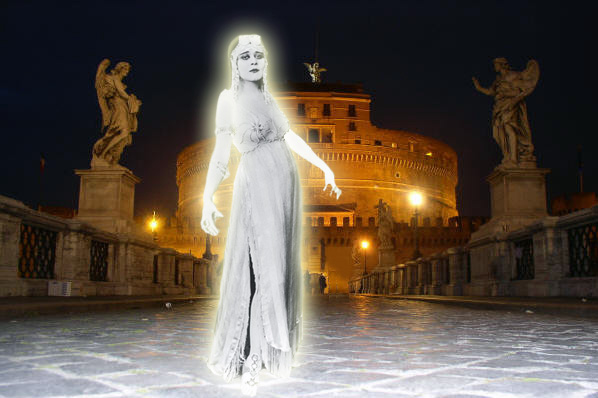 The sad tale of Beatrice Cenci
The sad tale of Beatrice Cenci
Beatrice Cenci (1577-99) was the daughter of the aristocratic brute Francesco Cenci. His crimes against Beatrice ranged from cruel beatings to rape. The family reported his atrocities many times but Francesco’s ties to the nobility of Rome always gave him a free pass. Eventually he sent the family away to the country and there they plotted their revenge.
In 1558, when Francesco was visiting the country castle, they drugged him and beat him to death with a hammer. With Francesco missing, the authorities got involved and eventually the mystery was solved. The four members of the Cenci family were arrested, found guilty and sentenced to death. Even though the people of Rome appealed, Pope Clement VIII showed no mercy. Patricide, especially a noble patricide could not be forgiven, no matter how horrible the crimes he made on his family.
At dawn on September 11, 1599, the Cenci family was taken from the prison of Corte Savella on via di Monserrato to the scaffold built along Sant’Angelo Bridge. They were tortured and killed.
Giacomo, the older brother, was quartered with an axe, and had his limbs hung in the four corners of the Piazza in front of the bridge. Lucrezia (the mother) and Beatrice were beheaded with a sword.
Bernardo, the youngest son was spared, although he was forced to witness the execution of his family. He then spent the rest of his life in prison, after relinquishing all the family’s property to the Pope’s family.
Beatrice became a symbol of resistance against the arrogant aristocracy. Maybe this is what brings her back to the Sant’Angelo bridge every year. She’ll appear sometime between the 10th and 11th of September carrying her severed head in her hands.
The photo I used for this story is the ghost of Beatrice Cenci on the Sant’Angelo Bridge as created from the ‘Genti e Paesi’ website. This is the tour group that offered the “meet Julia Berenice” at the Teatro Marcello. The group also offers a ghost tour (with actors) for Beatrice Cenci. The actual ghost carries her decapitated head in her hands but I guess that would be a bit difficult for the actor portraying the ghost.
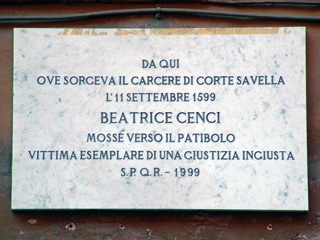 The Corte Savella prison (now on via di Monserrato, close to Campo dei Fiore) was so notorious for torturing it’s prisoners it was finally torn down. In 1999, on the 500th anniversary of her execution, the municipality of Rome hung a commemorative plaque that says:
The Corte Savella prison (now on via di Monserrato, close to Campo dei Fiore) was so notorious for torturing it’s prisoners it was finally torn down. In 1999, on the 500th anniversary of her execution, the municipality of Rome hung a commemorative plaque that says:
FROM HERE
WHERE CORTE SAVELLA PRISON STOOD
ON SEPTEMBER 11, 1599
BEATRICE CENCI
MOVED TO THE GALLOWS
AN EXEMPLARY VICTIM OF AN UNFAIR JUSTICE.
Rodrigo Borgia (Pope Alexander VI) in Campo dei Fiori
In closing the 15th-16th century ghosts, I’d just like to add that Pope Alexander VI, the infamous Rodrigo Borgia has been known to make a visit now and them near the house of his mistress Vannozza dei Cattanei on via del Pellegrino in Campo dei Fiori.
Vannozza was the mother of the Borgia children Giovanni, Cesare, Lucrezia and Gioffre. She also owned a couple of Inns in the Campo dei Fiori, the most famous one was named the Locanda della Vacca (The Inn of the Cow) after the cow on the coat of arms of Alexander VI. It is here at the home of the Locanda Della Vacca where the ghost of Rodrigo Borgia likes to return.
MODERN GHOSTS (or after the 18th century)
Political Ghosts
Italian Politicians have been skewered a lot lately from the scandals of Silvio Berlusconi to the recent failures in the Italian Parliament. It might seem like the attacks are coming from all sides, but they are also coming from the spirit world.
For many years, Deputies and workers in the Hall of Deputies have reported getting slapped by the by the ghost of the Friar of Montecitorio. He was a member of the Curia Apostolica (the Papal law Courts) in the late 17th century when the Palazzo Montecitorio served as the Roman Curia.
He’s probably really pissed of at what he sees going on today and probably wishes he could inflict more harm than just a slap.
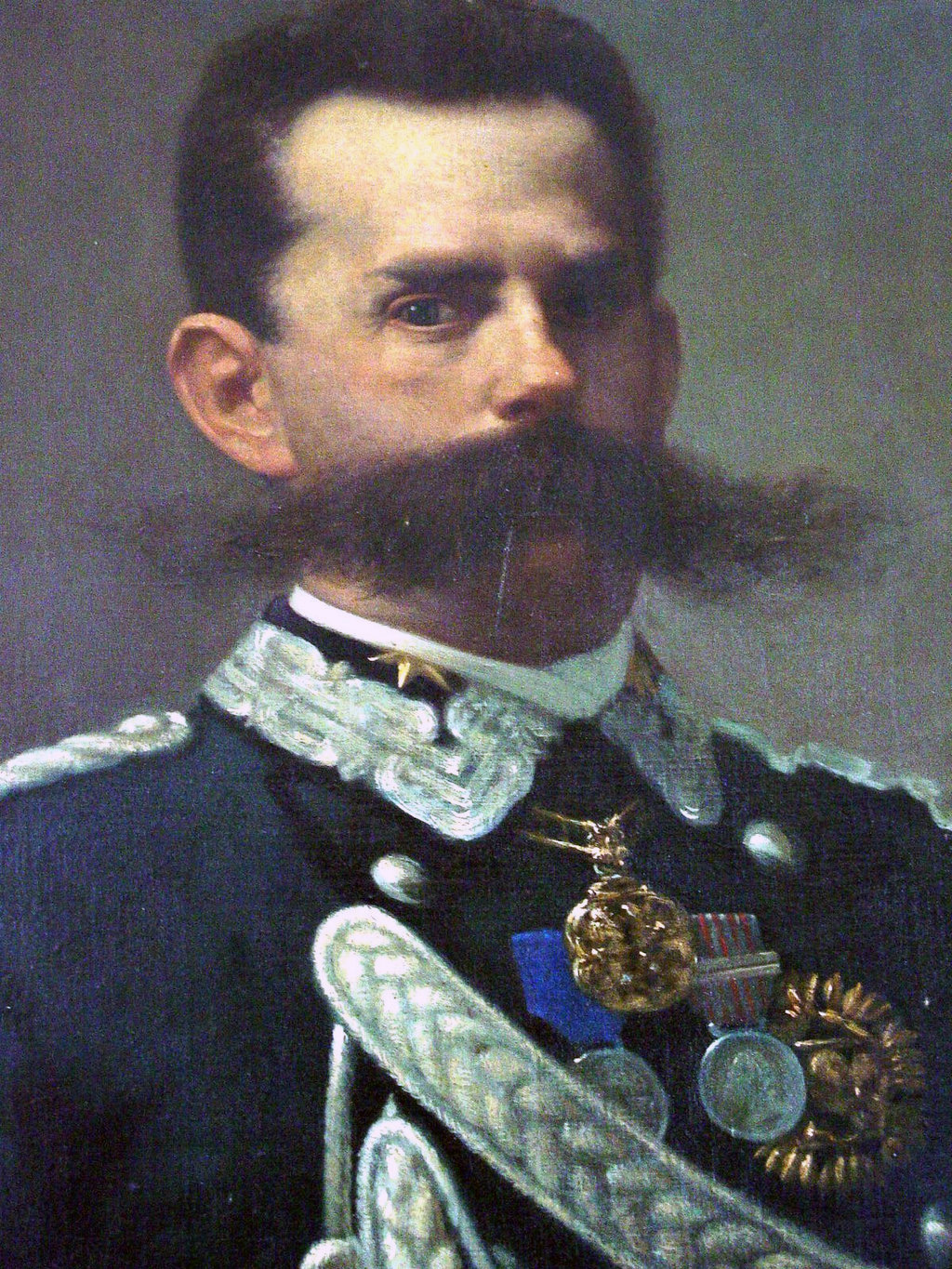 And while Friar of Montecitorio haunts the Italian Hall of Deputies, the ghost of the grand mustachioed King Umberto I (who was actually murdered in Monza in 1900) haunts the Piazza del Pantheon and the streets outside of the Palazzo Madama (the Italian Senate building).
And while Friar of Montecitorio haunts the Italian Hall of Deputies, the ghost of the grand mustachioed King Umberto I (who was actually murdered in Monza in 1900) haunts the Piazza del Pantheon and the streets outside of the Palazzo Madama (the Italian Senate building).
No one really understands why King Umberto chose to return to Rome but he’s make several appearances. A Carabiniere on guard near Palazzo Madama swears he spoke to the ghost King.
By the way there is a great story about the death of Umberto I. The King went to a small restaurant in Monza with his aide-de-camp, General Emilio Ponza-Vaglia. When the owner came out to greet the King, they both discovered they could have been twins, same face, same build. As they got to know each other they discovered they were born on the same day, March 14, 1844, in the same town. It got better. They both married a woman named Margherita. The restaurateur opened his eatery on the same day the King was coroneted.
On July 29th 1900, the King was told the restaurateur had died in a shooting accident. The King expressed his deepest regrets right before he was shot to death by an anarchist.
The Ghosts of Good Fortune
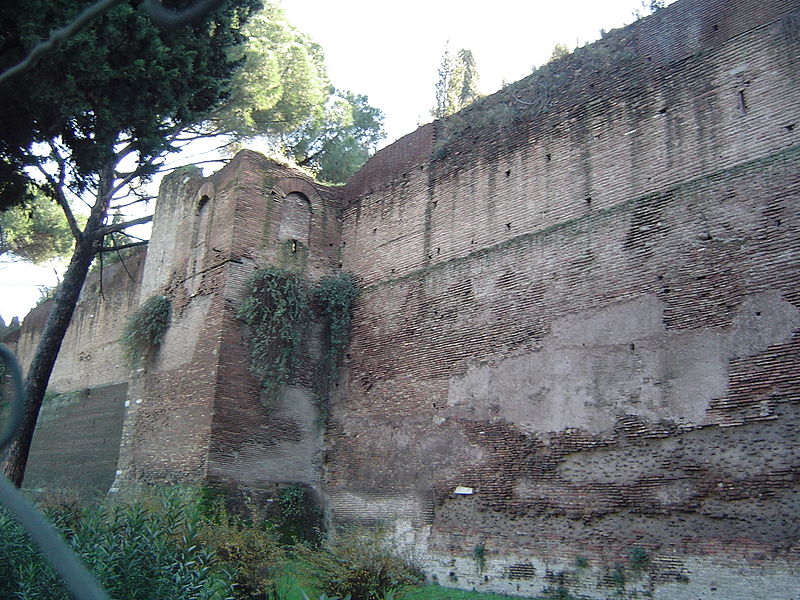 In 1825, Leonidas Montanari and Angelo Targhino, two Carbonari (Italian revolutionaries) were arrested, beheaded in the Piazza del Popolo and buried in a gravesite near the Muro Torto (twisted wall), the ancient Roman wall supporting the Pincian Hillside of the Villa Borghese park. The area along the wall was once used as the burial site of thieves, vagabonds, prostitutes and suicide victims.
In 1825, Leonidas Montanari and Angelo Targhino, two Carbonari (Italian revolutionaries) were arrested, beheaded in the Piazza del Popolo and buried in a gravesite near the Muro Torto (twisted wall), the ancient Roman wall supporting the Pincian Hillside of the Villa Borghese park. The area along the wall was once used as the burial site of thieves, vagabonds, prostitutes and suicide victims.
The ghosts of the two Carbonari now walk through the park along the stretch of the old wall holding their heads in their hands. For those lucky enough to see them, and only if you show no fear, they’ll give you the winning lottery numbers. Hey, it’s happened.
The Ghosts of the Gestapo HQ
The Villa Brasini, in Piazzale di Ponte Milvio (where Constantine defeated Maxentius) was built by architect and alchemist, Armando Brasini. The villa is filled with secret passages. Supposedly, Brasini built the villa on a site where the field of energy of dimensions all meet.
During WWII the villa was used as a Nazi Gestapo HQ and today there are still heard the screams of the tortured ghosts killed by the Gestapo.
These days, the Villa Brasini is an event location open for private parties and weddings.
“I’ll be back”
One late night in the late 18th century on via dei Quattro Venti, in the Monteverde Vecchio district of the Trastevere, the Marquis Luca de Marchetti jumped out of a window of his Palazzo. Before he fell to the ground and died, he screamed, “I’ll be back”.
He did come back. These days he wanders the halls of the building and continues to jump from the windows. The villa is pretty rundown and has been under renovation by the Municipality since 1981. The residents of the via dei Quattro Venti aren’t afraid of the Marquis. If anything, they’re really pissed off at the loud noise he makes and his ghost hits the ground. There have been several complaints to the police over this disturbance of the peace but I have no idea what the police did to solve the problem.
The poet John Keats died in 1821 of Tuberculosis at the age of 25. His remains are interred in the Protestant cemetery near the Pyramid under a grave marker with the name “YOUNG ENGLISH POET” and the inscription “ Here lies One whose Name was writ in Water”.
The Protestant Cemetery is a wonderful place to visit if you have the time.
Keats moved into a house near the Spanish Steps. It’s now the Keats-Shelley Museum. Percy Bysshe Shelley died in 1822 at age 29 when he drowned in a storm while sailing from Livorno to Leica on the Ligurian Coast. His remains are also interred in the Protestant Cemetery of Rome.
The ghost of John Keats has been seen by a number of people wandering through the house/museum. I have never heard of any Shelley hauntings in Rome or any other part of the living world, although I personally feel that Shelley would make a much better ghost than Keats.
There are countless other hauntings throughout the city. Hooded ghosts dressed in black under the Fatebenefratelli Hospital on Tiburtina island, a young woman haunts the Via dell’Aquilla near the Campo dei Fiori, or on Via di Casal Bruciato, near the Tiburtina Train station, the ghost of a woman has been seen (quite a few times) chasing the ghost of an old bearded man and beating him with a stick. These are just a few. Rome is a very old city and I’m sure there are hundreds of spirits haunting her streets and houses.
THE OCCULT
Aside from the ghosts, there are a few supernatural locations you might want to check out while you’re looking for ghosts.
In the center of the Piazza Vittorio Emanuele (in the Esquilino district) near The Basilica of Santa Maria Maggiore, are the 3rd century remains of the Nymphaeum of Severus Alexander, the last emperor of the Severan Dynasty. The area literally dried up when the aqueducts were destroyed in the 5th century but when water was restored in the 16th century this once again became a valuable again.
In the 17th century the old Nymphaeum was rebuilt into the Villa Palombara, built by Massimiliano Palombara, the Marquis of Peitraforte and a practicing alchemist and occultist. When the alchemist Giuseppe Borri came to Rome he joined the Palombara circle. Borri conducted experiments (paid for by Palombara) to turn common metals into gold. No one knows if his experiments worked or not. He fled Rome when he was a person of interest during one of the 17th century Inquisitions. He also left behind a bunch of documents filled with formulas that no-one else understood. Palombara had them inscribed onto the doorway of his laboratory. The symbols along the frame of the door include Saturn for lead, Jupiter for tin, mars for iron, Venus for copper, Mercury for mercury and the Sun/Apollo for gold.
This doorway is all that remains of the villa. The rest was destroyed in the late 19th century to make room for the Urban renewal of the Italian Reunification. The statues on either side of the Magic door were added much later. They were from the Quirinale Hill from a temple dedicated to Egyptian gods. They’ve been guarding the magic door since 1888.
If you’re still looking for the truly bizarre, head on over to the Via Veneto, once the center of la dolce vita (the sweet life) of the 60’s.
 Very close to the American Embassy you’ll find the Capuchin Bone Crypt of the Capuchin Monks beneath the Church of the Santa Maria della Concezione.
Very close to the American Embassy you’ll find the Capuchin Bone Crypt of the Capuchin Monks beneath the Church of the Santa Maria della Concezione.
The cappuccino coffee is a reference to the little hoods of their robes. The crypt under the church has become a tourist destination for lovers of the macabre. The walls of the crypt are decorated entirely of human remains; bones, teeth, rib cages, femurs, fingers. They are fabricated from over 4,000 skeletons and they are actually very beautiful.
Over the door it reads (in three languages), “What you are now, we once were; what we are now, you shall be.” It’s kind of a nice reminder that we are only here temporarily.
And finally….
In the Basilica di San Paolo, there is a picture of every Pope lined up in a row. Legend has it that when all the spaces are filled up, the end of the world will come. There are only eight spaces left.
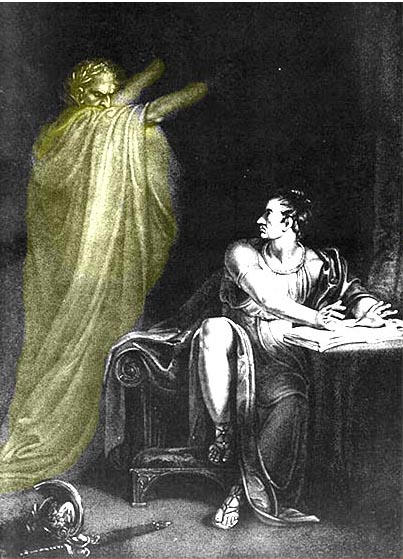
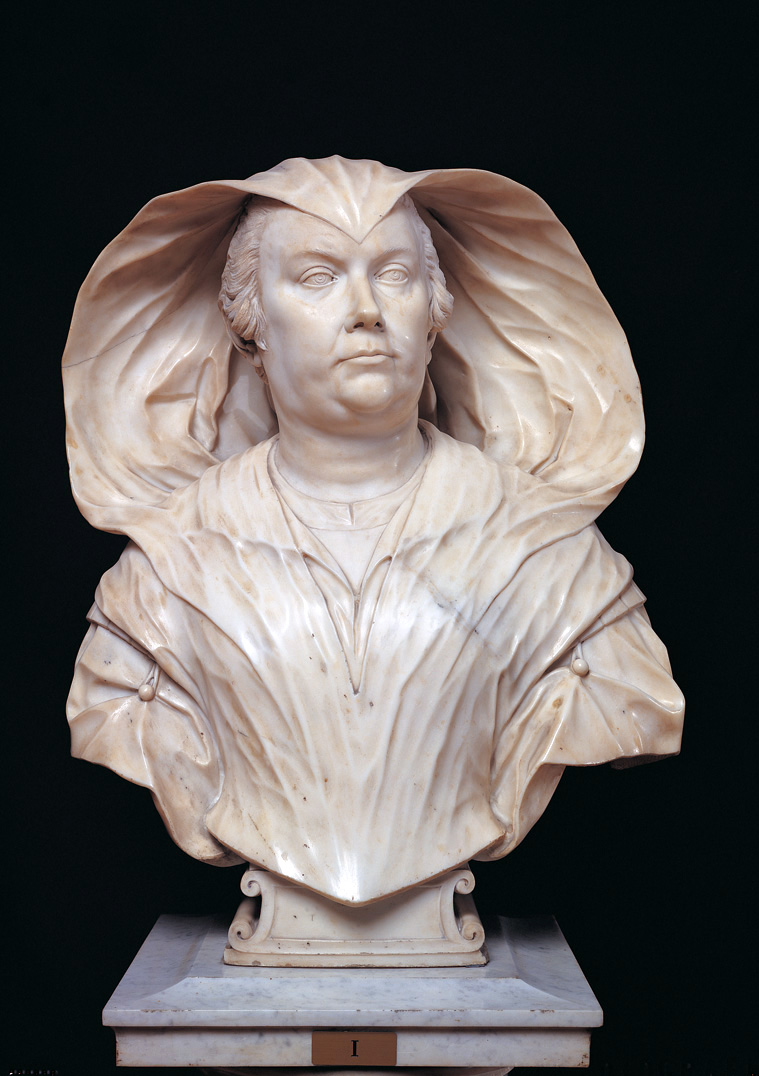
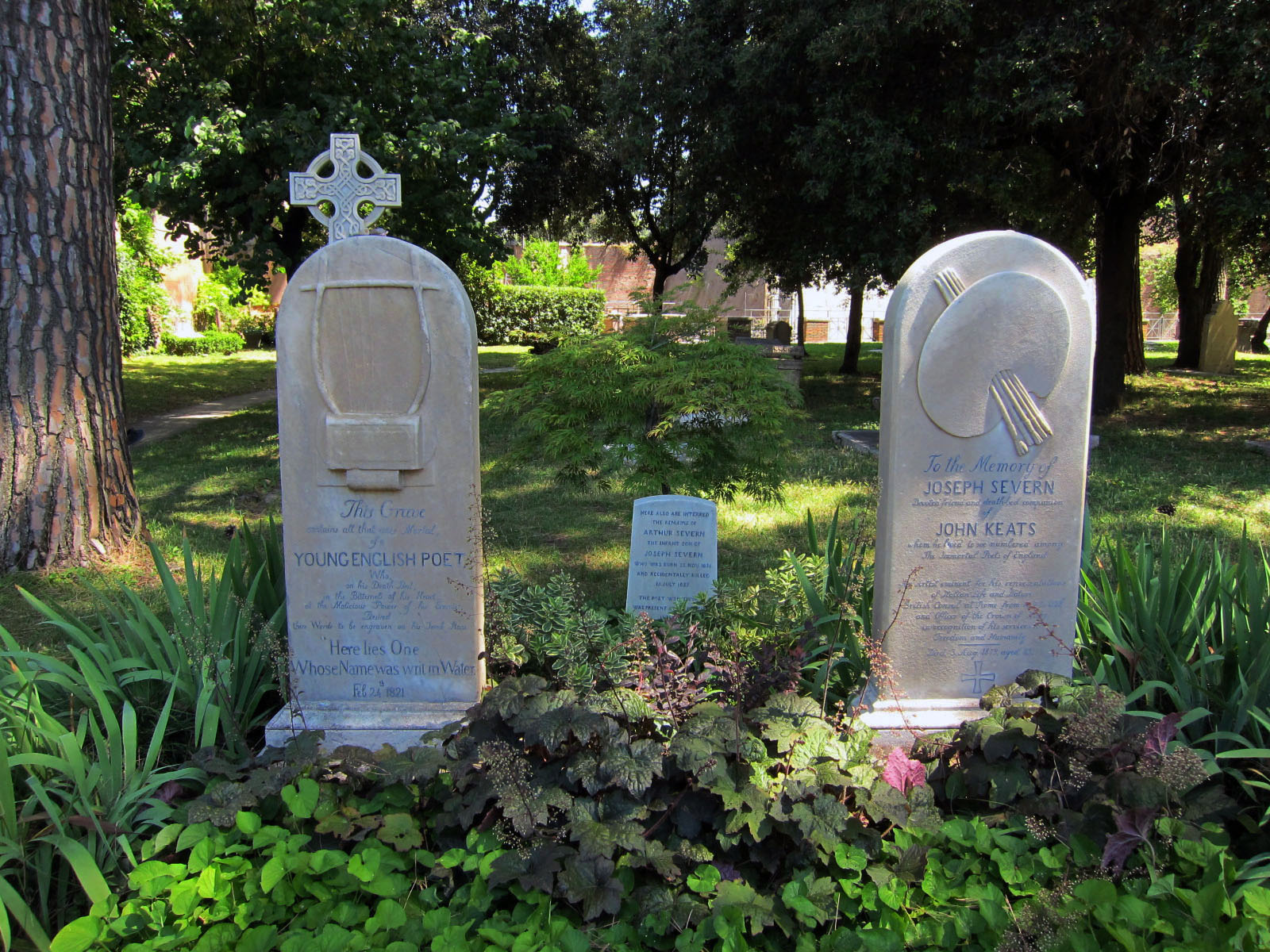

You must be logged in to post a comment.